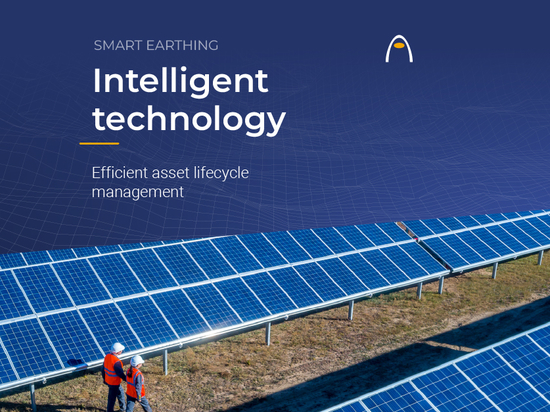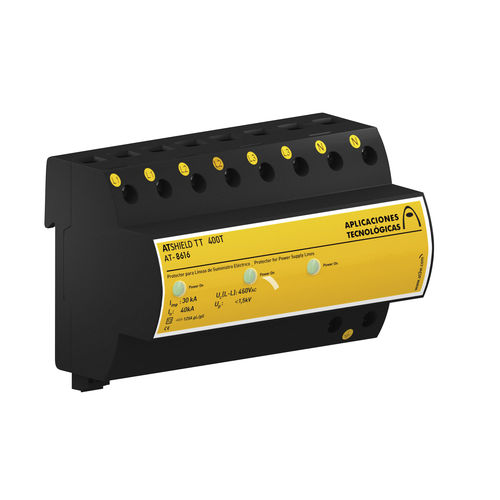
#Industry News
The 5 most frequently asked questions about surge protection
The 5 most frequently asked questions about surge protection
With the increasing reliance on interconnected equipment in the domestic and business sectors, adequate surge protection is essential for the maintenance of any business. The replacement of any damaged element or its rapid degradation entails large financial outlays that are sometimes difficult to bear. Overheating, on the other hand, increases the likelihood of fire and, consequently, personal injury.
The main difference between transient and permanent overvoltages is their origin and duration. Transient overvoltages are voltage surges, of very short duration (milliseconds), measured between two conductors, or between conductor and ground. In terms of origin, they may be due to atmospheric electrical discharges (lightning), switching processes or faults (earth contact or short-circuit).
On the other hand, permanent or sustained overvoltages are voltage surges over a longer or even indefinite period of time. They occur due to phase decompensation, usually caused by problems in the electrical distribution network, or due to defects in the connection of the neutral conductor or breakage of the neutral conductor.
Due to the consequences of a voltage surge in any electrical installation, which can range from degradation and loss of connected equipment to fires, it is important to have surge protection devices (SPD) adapted to the needs of each installation.
From how are they generated to the type of protector to select and the regulations in force, these are the five questions most frequently answered by Aplicaciones Tecnológicas specialists on surge protection.
1. Is surge protection mandatory?
There are several regulations, codes, standards, specifications and manuals that prescribe surge protection:
– Low Voltage Electrotechnical Regulation: Protection systems for indoor or receiving installations for low voltage shall prevent the effects of overcurrents and overvoltages which, due to various causes, can be expected in these installations.
– Technical Building Code SUA8: The metallic structure of the building, the metallic installation, the external conductive elements, the electrical and telecommunication circuits of the space to be protected and the external lightning protection system shall be connected with equipotential bonding conductors or overvoltage limiters to the earth network.
– IEC 61643 (UNE-EN 61643): This set of standards defines the requirements for surge protectors and their application.
– Particular ENDESA specification NRZ103: Electrical lines in all new or refurbishment work on low voltage link installations must be protected against transient and permanent overvoltages.
– IBERDROLA Technical Manual MT 2.80.12: The installation of type 1 surge protection devices is mandatory in buildings with external lightning protection systems or within a radius of less than 50m.
2. How are transient and permanent overvoltages generated?
Transient overvoltages are voltage surges of very short duration, measured between two conductors, or between conductor and earth. Permanent or temporary overvoltages are those with a relatively long duration (several cycles).
Transient overvoltages can be generated by atmospheric electrical discharges or by switching processes.
Atmospheric discharges can produce conducted or direct overvoltages, induced or indirect overvoltages (through the electromagnetic field generated in the discharge) and increases in ground potential.
Switching overvoltages can be generated by switching of high-power machinery or by switching and/or faults in the power supply.
Finally, permanent overvoltages are caused by phase decompensation normally caused by breakage or defect in the neutral conductor and/or faults in the transformer substations.
3. How to select type 1, 2 or 3 surge protectors?
Type 1 protectors are tested with a 10/350 µs lightning wave, simulating the effects of a direct lightning discharge.
Type 2 protectorsare tested with an 8/20 µs lightning wave, simulating the secondary effects of lightning (conduction, induction and ground potential rise).
Type 3 protectors are tested with a combined voltage and current pulse waveform, simulating already damped overvoltages.
Type 1 protectors must be installed in main switchboards, outside buildings and in central meter rooms, especially if the building is equipped with an external lightning protection system.
Type 2 protectors should be installed in secondary switchboards and always coordinated, at least 10m apart, with type 1 protectors upstream of the installation.
Type 3 protectors are normally installed close to the equipment, or when they are more than 30m away from the previous protector, leaving very low residual voltages.
There are also combined type 1+2 or type 2+3 protectors that combine these characteristics.
4. Is it appropriate to install a circuit breaker to protect against short circuits in series with the surge protector?
No. According to the international standard IEC 61643, fuses are the most suitable preliminary short-circuit protection. A circuit breaker is tripped by both thermal and magnetic effects. An earth fault from a transient overvoltage has a high magnetic component so that any discharge can trip the circuit breaker without the surge arrester being faulty, leaving the line unprotected against future overvoltages without warning.
On the other hand, a fuse will only trip due to thermal effect, i.e. when the faulty surge protector short-circuits, protecting the installation when it is really necessary.
5. Am I fully protected with surge protection on power supply lines?
Although it may appear to be so from a regulatory point of view, surges can actually enter through any conductor that enters the equipment:
Telephone lines
Data lines
Computer lines
Coaxial lines
Each type of line has its own suitable surge protector, so the equipment is considered to be fully protected against surges if there is protection for both power supply lines and data lines.
Surge protection
Aplicaciones Tecnológicas has a wide range of surge protection devices (SPD) for different environments, from industrial to domestic, which adapt to the most demanding requirements.
For transient overvoltages, the type 1 protectors of the ATSHOCK series. Type 2 surge protectors, the ATSUB series and type 3 surge protectors, the ATCOVER series. Telecommunications and data line protection and special equipment are also available.
The permanent surge protectors manufactured by Aplicaciones Tecnológicas are divided into two ranges, the IGA TEST series and the ATCONTROL series.
In order to know the values of the overvoltages and to be able to improve the protection systems, we have an overvoltage counter and meter, the SURGE LOGGER.
If you would like more information on which surge protectors to use and where to place them, you can contact us at the following link. You can also attend any of our webinars on surge protection at the following link.







